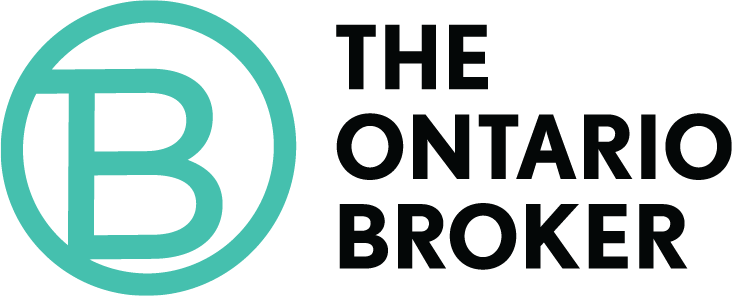
Earlier this year we launched a Keynote Speaker Series featuring today’s top thought leaders across different categories—Mental Health & Wellness; Marketing, Innovation & Disruption; and Equality, Diversity & Inclusion. We’ve been chatting with a few of them on the themes of our magazine. Here’s an excerpt from our discussion with Ron Tite—speaker, author and CEO.

AS YOU WORK WITH DIFFERENT INDUSTRIES AND BUSINESSES, WHAT ARE SOME OF THE STRUGGLES YOUR CLIENTS ARE EXPERIENCING AND WHAT ARE THE SOLUTIONS YOU’VE BEEN PUTTING FORWARD?
People are struggling a lot right now, especially with Zoom Gloom—we’re constantly on camera having to present ourselves to the world a certain way. We’ve been trained that when we’re on camera, we should be poised and perfect. When you meet someone in person, you’re able to pick up on body language, engage in conversation and feed off emotions. With Zoom we’re forced to be on but we’re not getting the reciprocal benefit, which is exhausting.
People were optimistic at the beginning of the pandemic. Over the past 14 months it’s been discouraging each time we’re told things were opening back up, only to be shut down again. We used to have breaks when we’d go for coffee or meet a client for lunch. Now it’s just an intense work period—people are finding it hard to keep pace. For those who are single or without children, it’s easy to just keep working. You put in a couple more hours in the evening when you should be signed off. Combine these together and it’s become an exhausted workforce, tired of doing the same thing the same way. When I’m asked about going into the office, I always encourage it if it can be done safely—if it adds a commute to your day or a change of scenery, breaking routine can make a big difference.
People need to be intentional with their day. Check in with people and clients, don’t skip mental health breaks and do things at night that energize and invigorate you. These used to be loosely baked into our day. Now we need to be conscious and intentional about valuing our mental health.
WHEN IT COMES TO MARKETING AND GROWTH, MANY BUSINESSES ARE SHIFTING AWAY FROM JUST WORD OF MOUTH. WHAT ADVICE WOULD YOU GIVE BROKERS TO IMPROVE WHAT THEY’VE BUILT WHILE MARKETING THEMSELVES FURTHER?
Great marketing is bound by purpose, defined by action and adopted by communication. Revisit what you fundamentally believe about insurance and the role you play with your clients, and align your actions to match. Actions should be intentional and solve people’s problems. Many people create social media platforms but only post selfies or holiday posts, which don’t add value. You need to be solving the problems people have right now—if they’re insurance related, where are they going for answers?
Be relevant at the right times. If it’s raining for a week, people might struggle with basement flooding. Create a great video to help people mitigate water damage, providing helpful tips and advice at a time when someone’s looking for it. If people have questions about the content you’ve provided, it’s an easy way to engage in a fast and authentic way, adding another layer of value.
The power of social media is distributing content that adds value and solves problems with an opportunity to answer questions along the way. This is what’s great about the new world of social distribution—it’s never been easier or cheaper to create content and get it out in the world. If content sucks, no one sees it because algorithms won’t pick it up. If it’s helpful and popular, you’ll see an uptick in engagement and can promote it in other places to amplify your message. Now this value-added piece is helping you acquire new clients.
LINKEDIN HAS BECOME ESSENTIAL IN NETWORKING AND DEVELOPING BUSINESS CONNECTIONS. HOW DO YOU USE THE PLATFORM?
From a business perspective, I spend most of my time on LinkedIn over other platforms. You’re surrounded by an unlimited supply of people with a professional mindset looking to engage, and it’s great for curating content. If I find an article that can add value to my client base, I curate that content for my audience—while I’m piggybacking on someone else’s thought leadership, I’m also curating it by sharing why I think it’s an important read for others. Even though I didn’t create it, I’m still positioning myself as a leader and a collector of not just what I generate, but what others generate. You don’t always have to create your own content. If someone makes a comment on something you’ve shared, you can be there to respond. It might be just as insightful, and now you’re more informed because someone has added to your conversation.
ANY OTHER ADVICE YOU’D LIKE TO SHARE?
Face the harsh realities that exist for you. When people say it’s going to be so great when we’re able to… remind yourself that those aren’t part of your reality right now. My current reality is sitting in my basement conducting keynotes and working with my team virtually. It’s also me getting to hang out with my kids, eating together and putting them to bed. Prior to the pandemic I’d spend so much time on planes I didn’t typically get to do these things. I’ve completely embraced this reality knowing that someday, other things will return.
